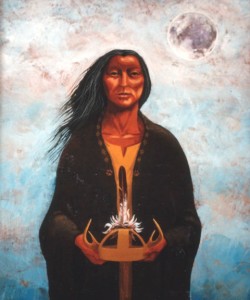ageism
The Three P’s: Pride, Pleasure & Purpose
The Three P’s: Pride, Pleasure and Purpose
A Simple Guide for How to Avoid Chronic Depression in Older Life
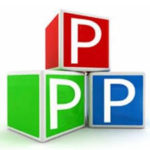 Recently a colleague told me about the “three P’s” which she teaches in workshops to older people. It’s such a simple yet helpful mantra to guide you in finding balance. Finding balance is one of your key developmental tasks in life, and especially so in older anastrozole years. Balance can help you avoid falling into chronic depression.
Recently a colleague told me about the “three P’s” which she teaches in workshops to older people. It’s such a simple yet helpful mantra to guide you in finding balance. Finding balance is one of your key developmental tasks in life, and especially so in older anastrozole years. Balance can help you avoid falling into chronic depression.
Older people are balancing provimed the combination of all of the life lessons they’ve been through, hopefully getting to some “wisdom” on and off at this point. Wisdom meaning, according to Joan Erikson PhD’s research a few years ago, “to know how to”.
They are balancing their anabolicstation.com growing needs for exercise, healthy eating, enough sleep, enough friends, enough mental stimulation, enough fun of various sorts that feeds their souls, enough contribution to the greater good, etc.
Which brings me back around to the “three P’s”. I would say that the Pride part is something a lot of my clients feel pretty good about. They are oftentimes proud of their careers or their families, or their contribution to others. The Pleasure part is, on the other hand, something they are figuring out and beginning to understand they need more of. That pleasure is critical in helping them find enjoyment in older years because it helps balance out the increasing number of challenges inherent in aging. Sometimes we brainstorm about what used to give them pleasure, what gives them pleasure now, and what they might like to try in the future given their capabilities at this point in their lives.
Pleasure is usually connoted by something that feels good visually, sound-wise, smell-wise, taste-wise and touch-wise. It also encompasses doing new things because the brain loves novelty.
The trick is to find “just enough” like in the Goldilocks story – not too much, not too, not too scary, not too bland. You get the gist.
That brings up the other “P” which is Purpose. This I see as one of the most difficult challenges for older people. Many of my clients have felt clear purpose in their earlier years – e.g. raising their children, helping with their grandchildren, serving on Boards in their communities or doing other volunteer work, working at their careers, being successful in a whole manner of ways.
Now, though, they may not be working their last paying careers. They may not be needed to watch grandchildren who are getting older and more independent. They may not feel able to commit to structured schedules in a volunteer or paid part-time job. They also may feel that they have offered to share their lifetime of accumulated, and valuable knowledge with groups, businesses, organizations, schools, etc. and felt that they were ignored or rebuffed. They feel “adrift”
This brings up the subject, then, of grief. Loss of earlier identities, loss of income, loss of value by others for their wisdom, loss of a clear path, and loss of groups of friends one makes in work-related settings.
However, the way through this, is to first acknowledge this grief. To also acknowledge that we live in an ageist society that does not typically value our elders. Our older people’s voices are too often not sought out, and not listened to, and not respected.
As they educate ourselves about ageism in our society and get support for the grief that all of these aspects engender, they begin to be able to lift their heads up above this and take a look around for where they might have purpose now in their lives.
 Often they come around to asking the questions: Where am I helping someone? Who is in worse or different shape than I am that I can help and who would appreciate some attention? Can I volunteer in a hospital holding preemies, can I volunteer in an assisted living community, how about in a library or a nonprofit thrift shop? Can I volunteer taking care of a pet for someone? Can I visit a home-bound neighbor who is lonely? There are so many people in need in our country and so many understaffed nonprofits trying to help.
Often they come around to asking the questions: Where am I helping someone? Who is in worse or different shape than I am that I can help and who would appreciate some attention? Can I volunteer in a hospital holding preemies, can I volunteer in an assisted living community, how about in a library or a nonprofit thrift shop? Can I volunteer taking care of a pet for someone? Can I visit a home-bound neighbor who is lonely? There are so many people in need in our country and so many understaffed nonprofits trying to help.
The point is not *what* you do, but it’s about your sense of purpose. When you are thanked from the heart by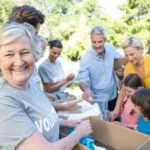 someone for something you do, you get more from the interchange than they do! This is something many volunteers say to be true – that they get more from being volunteers, they think, than the people they help.
someone for something you do, you get more from the interchange than they do! This is something many volunteers say to be true – that they get more from being volunteers, they think, than the people they help.
So, Pride, Pleasure, Purpose. A simple equation, so beautiful in its simplicity and truth.
Broad Band – Raising Women Up Out of Invisibility
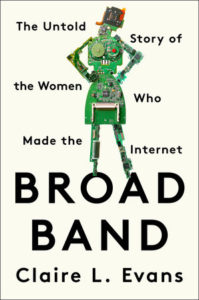 This week we saw the release of a new book chronicling a hidden segment of the female population who made important contributions to our world without most people ever realizing it. Similar to Hidden Figures, although perhaps not as dramatic as a WWII story, the women in Claire Evans’ Broad Band were creatives, science geeks, pragmatists, entrepreneurs, activists, visionaries and householders trying to make a living. They were some of the very few pioneering women who pushed out the boundaries and succeeded in the vastly male-dominated world of science and computing.
This week we saw the release of a new book chronicling a hidden segment of the female population who made important contributions to our world without most people ever realizing it. Similar to Hidden Figures, although perhaps not as dramatic as a WWII story, the women in Claire Evans’ Broad Band were creatives, science geeks, pragmatists, entrepreneurs, activists, visionaries and householders trying to make a living. They were some of the very few pioneering women who pushed out the boundaries and succeeded in the vastly male-dominated world of science and computing.
Claire takes on the daunting task of sifting through so many many stories and voices to feature just a few spanning over 100 years. She begins with ground-breakers like Ava Lovelace, Grace Hopper and the “two Betty’s” (Betty Jean Jennings and Betty Snyder). She spins the tales of “A Girl Named Jake” and tracks the women leaders through the days of the ARPANET, the early BBS’s, the dial-up’s, the emergence of the web and the world of gamers. As Claire poignently writes at the end of her book, there are hundreds of more stories to tell and women to feature – she hopes others will take up on the torch and keep giving voice to women’s contributions and stories.
I am so honored to have a few of my own stories told in Claire’s chronicle. It was a blast of a ride  to launch the first women-focused online site Women’s Wire to entice women to try out this new medium which would change our world. There were so few women online in the beginning. It was clear to me that we needed more diversity and more different kinds of voices involved in this new medium. Trying to teach women how to use computers was great fun – I was able to move from our mighty band of 1500 initial Women’s Wire subscribers to launch and mange a huge new “women’s channel” of 7,000,000 female subscribers at AOL. Once the doors opened to the Net for women, they flooded online and have never looked back.
to launch the first women-focused online site Women’s Wire to entice women to try out this new medium which would change our world. There were so few women online in the beginning. It was clear to me that we needed more diversity and more different kinds of voices involved in this new medium. Trying to teach women how to use computers was great fun – I was able to move from our mighty band of 1500 initial Women’s Wire subscribers to launch and mange a huge new “women’s channel” of 7,000,000 female subscribers at AOL. Once the doors opened to the Net for women, they flooded online and have never looked back.
As a lifelong activist and feminist, I find myself working every day now to bring my own version of justice and fairness and kindness to this population I am entering – seniors. This population too – especially senior *women* – needs to become more visible and have their voices heard. They all have rich stories – adventures, failures, successes, lessons learned that can be passed on. And this is time in our country when we can really use those voices sharing what they have learned, often the hard way, and what they have accomplished through plowing hard ground – accomplishments that often are simply taken for granted in the present time.
Although I have not yet finished Claire’s book, I look forward to reading more pages every day and learning about the amazing women who invented and contributed (and led!) in the field of computing. Some of the women are renowned to me and some I am just learning about. Again, such an honor to have a small place in this book amongst so many amazing women and kudos to Claire for taking on this challenge and giving VOICE to so many whose stories are fascinating and worthy of being told.
Not Enough Geriatricians or Geriatric Psychotherapists Either
One of our old friends Katie Hafner just wrote an important article for the NY Times entitled “As Population Ages, Where Are the Geriatricians?”. Katie eloquently explains the situation which is that this country is woefully underserved when it comes to doctors who understand the myriad complexity of symptoms that older people encounter. Docs are under-reimbursed by Medicare and so many choose not to go into this field. Others find it too complicated, too difficult, maybe too sad for them. At any rate, treating older people is NOT the same as treating younger people – whether it involves the medical field or the mental health field! Here’s a top-notch quote from Katie’s article that speaks to that fact:
Dr. Eckstrom was a general internist who practiced in primary care for nine years before returning to Oregon Health and Science University to complete a geriatrics fellowship. “I thought I was doing a good job caring for my patients,” she said. “But oral trenbolone for sale I wanted to do more geriatrics teaching and research.” The fellowship opened her eyes. “I had no idea what I didn’t know,” she said.
I hope there will be more articles and education for the public about this critical lack of informed care for the rapidly growing aging population. Someone commented that the government should increase Medicare reimbursement rates for doctors – and I think for mental health professionals too – to encourage more people to go into this field. Someone even suggested the government should pay the student debt for medical students going into geriatrics. We have to do something!
A New Year & A New Perspective
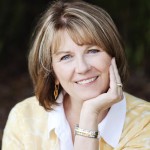 A New Year & A New Perspective
A New Year & A New Perspective
Dear friends and colleagues in the healing arts,
2015 presented me with some interesting challenges. After the death of my beloved mother and the near death and continued illness of my husband, I wondered how we healers can continue to serve our patients when we ourselves are in the midst of tough times. Maybe some of you have come up against this question too.
What I discovered is, as songwriter Leonard Cohen writes, “The birds they sang at the break of day. Start again I heard them say. Don’t dwell on what has passed away or what is yet to be. Ring the bells that still can ring. Forget your perfect offering. There is a crack in everything. That’s how the light gets in.”
It’s this last part that has surprised me. What an unexpected gift is the grace and light that can emerge out of adversity. What I am learned continually deepens both my work and my home life.
As we get older, we find ourselves adding to our toolkit of life skills. Mindfulness tools have reentered my life and work in a big way. And so has my intention to reach a much wider audience through teaching nationally about conscious aging. The need and demand for navigation help is so great as the boomer generation enters the unfamiliar terrain of older life.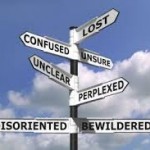
If you have friends, family or patients in these populations below who you think I might be able to help or if you have questions yourself, please feel free to reach out anytime:
- People in their 50’s, 60’s and 70’s waking up to their own sense of aging – often through illness or other changes in themselves or their loved ones. They seek answers, solutions, and guidance.
- Adult children of aging parents who feel confounded and frustrated about how to best help their parents through a myriad of difficult circumstances. They are the sandwich generation with aging parents, children and often grandchildren too.
- Families where adult children and aging parents need to and want to come to some new understandings and find a closeness now to the extent they can while they can still can.
- People in their 80’s and early 90’s who are facing their last years with all that that entails – memories, regrets, fears, peace and contemplation – all healthy parts of this stage of life. Having a genuinely caring nonjudgmental skilled listener is so valuable.
You might already know that there are very few psychotherapists in Marin who have advance training in gerontology. With my expertise in the fields of aging, communication, business, medicine and psychology, I am uniquely qualified to help your midlife and older patients, friends and family.
My offices are in Mill Valley and San Anselmo. Telephone appointments are also available for people who do not live close by. I provide a free initial phone consultation. And if I can’t help, I can often steer people to other beneficial resources.
With warm wishes for a peaceful 2016,
Nancy Rhine, MS, LMFT, CPG
415-378-6577
nrhine@gmail.com
Ageism in Modern America
While cruising Facebook this morning I came across an article posted by Paula Span, an author I respect so much for her insightful blog posts when she was featured as the writer for The New Old Age for the NY Times. Out of a budget cut, her weekly blog was cut but she still writes for the Times sometime and posts on her FB page. Here is the link to the article she posted which was written by the chief of geriatrics at Columbia University: America’s Bias Against Older Women Must Stop
The article has to do with the flurry of ageist comments in the media lately having to do with Caitlin Jenner. Not comments so much that were disparaging about her transformation from Bruce to Caitlin but comments that were denigrating of older women. Demeaning comments, snide jokes, general put-down’s about older bodies, in particular older female bodies.
This topic and more importantly this phenomenon is so widespread and so ubiquitous in our culture that it is overwhelming when considered. And that overwhelm can easily lead to increased poor self esteem on the part of older women, denial and fighting against “aging” thus the billions spent on anti-aging products, and depression. I see this depression so very commonly in my counseling work with older women, espeically those in their 60’s and 70’s.
There is a common thread of complaints under the heading of ageism whether we use that word or not. The experience is of: being the butt of disparaging and cruel jokes, feeling devalued, ridiculed, infantalized and invisible. of not counting, that they don’t matter.
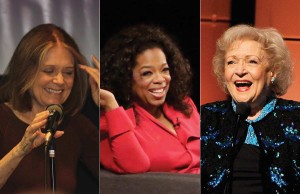 I wonder about our fear of women and women’s power in this culture. We women do have some kind of power when we are young and beautiful. Perhaps that is instinct that we are attractive when we can procreate. Perhaps we are also considered more valuable then because we “consume” therefore Wall St and the media value us. That doesn’t make much sense tho’ when you consider that older women and older people in general are big consumers and oh by the way voters as well.
I wonder about our fear of women and women’s power in this culture. We women do have some kind of power when we are young and beautiful. Perhaps that is instinct that we are attractive when we can procreate. Perhaps we are also considered more valuable then because we “consume” therefore Wall St and the media value us. That doesn’t make much sense tho’ when you consider that older women and older people in general are big consumers and oh by the way voters as well.
No, there is something intrinsic and deeply rooted in why this culture devalues older women to such an extent. More than they do older men although there is devaluing there too. Is it related to fear of mortality and fear of dying? Is it the fear of becoming superfluous and needy? We know that our culture puts huge emphasis on independence and me-ness. Cross interdependence is not a big part of our cultural tone. And/or does ageism towards older women have to do with latent resentment towards primary attachment figures who predominantly are mothers emerging later when our mothers or ourselves are now in a vulnerable position. Payback time in other words?
I believe that we lose out as a culture and a people when we do not value our older women and listen to what they have to teach us. Margaret Mead told a story about the old does of the red tail deer herds in Alaska. In times of drought or severe storms, it was the old does who had the memory of out of the way watering holes or sheltering cliff where they could find refuge from the storms. The herd rallied behind and old does towards safety.
I worry about this way we have of devaluing and demeaning our older women. We are in times of crisis. We need all the wisdom we can find. Denigrating and oppressing and discounting an entire segment of our population is anti-survival and anti-wisdom. I hope we can change. I hope that we boomers can push back against too-often-accept stereotyping and dismissing of older women. Our survival may just depend on it.
